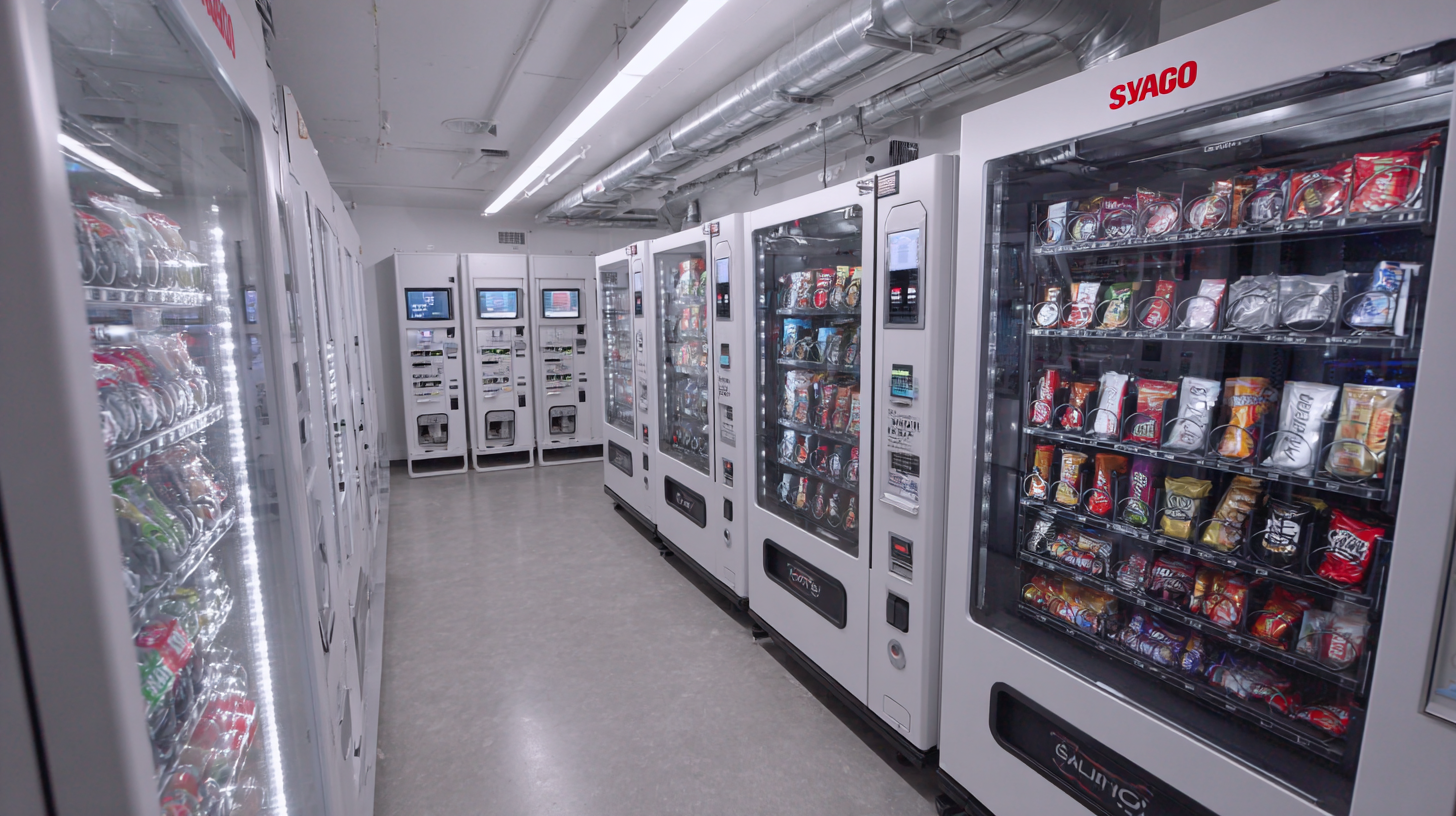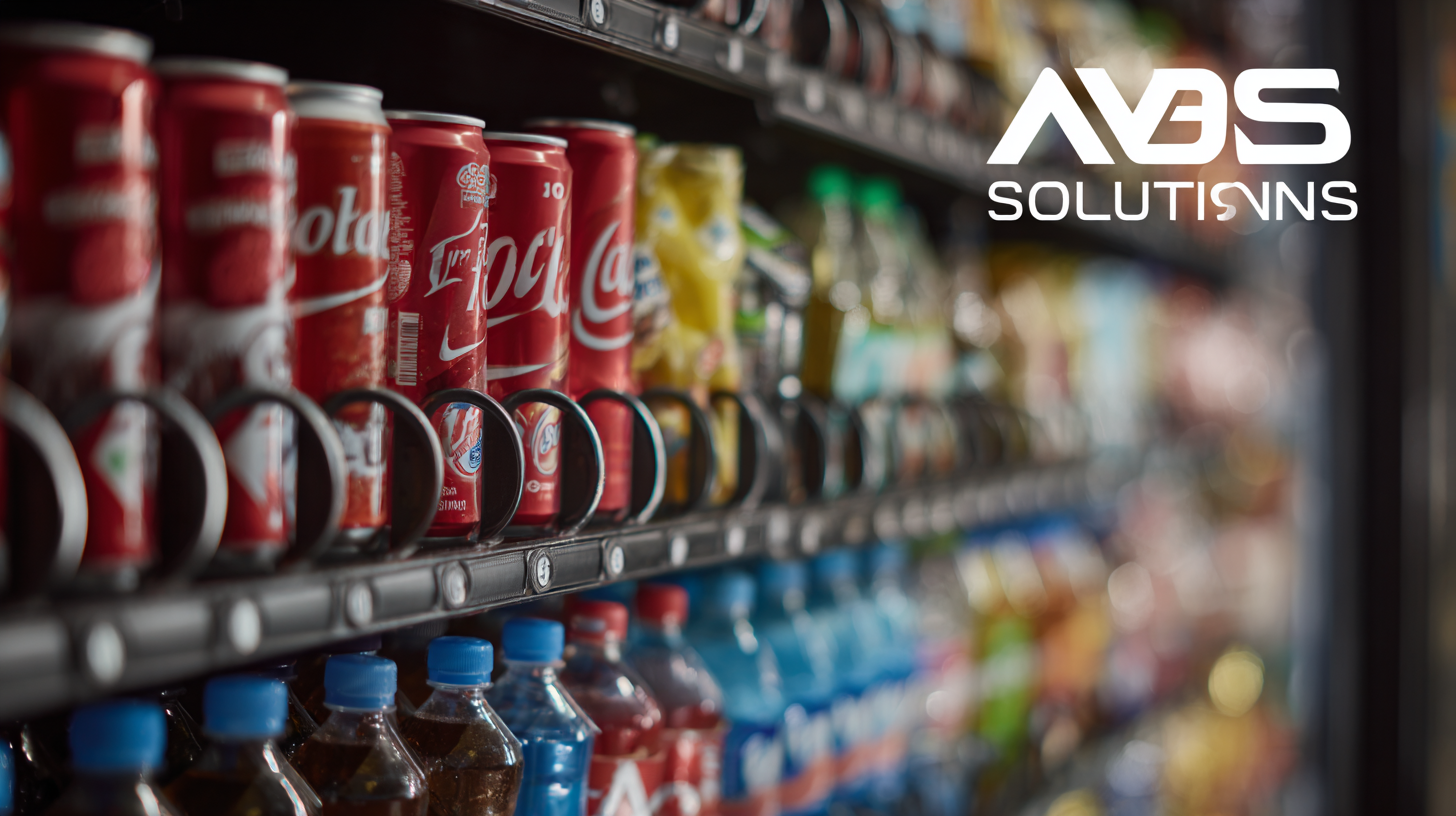The Future of Vending Solutions: Innovations Shaping Tomorrow's Automated Retail
The vending solutions landscape is undergoing a remarkable transformation, driven by technological advancements and evolving consumer expectations. According to a report by MarketsandMarkets, the global vending machine market is projected to reach $25.7 billion by 2027, growing at a CAGR of 9.33% from 2022 to 2027. This boom is fueled by innovations such as contactless payments, smart vending machines with inventory management systems, and healthier product offerings that cater to the demand for convenience and quality. As automated retail continues to evolve, the benefits of these advanced vending solutions are becoming increasingly significant, offering businesses a competitive edge while enhancing customer experience.

With the integration of IoT technology, data analytics, and sustainable practices, the future of vending solutions promises to redefine the automated retail space, making it more efficient and responsive to market needs.
The Rise of Smart Vending: Integrating AI for Enhanced Customer Experience
The rapid advancement of technology is fundamentally transforming the vending industry, integrating artificial intelligence (AI) into machines to enhance user interaction and experience. Smart vending machines are no longer just automated dispensers of snacks and beverages; they are evolving into intelligent retail solutions that can recognize customer preferences, anticipate needs, and provide personalized recommendations. For instance, utilizing data analytics and machine learning algorithms, these machines can track purchasing behaviors, enabling them to adjust their offerings in real time to appeal more effectively to the consumer base.
Moreover, the implementation of AI in vending solutions offers an array of conveniences, such as cashless payment options, interactive touchscreens, and even voice-activated services. Customers can enjoy a seamless and engaging shopping experience with features like product suggestions based on previous purchases or reminders for favorite snacks—all aimed at making vending more intuitive and user-friendly. As the market for automated retail continues to expand, the integration of smart technology will not only enhance the customer journey but also streamline inventory management for operators, marking a significant shift toward a future where vending is smarter, faster, and more efficient.
The Future of Vending Solutions: Innovations Shaping Tomorrow's Automated Retail
This chart illustrates the percentage adoption of various innovative technologies in vending solutions over the last five years. The data highlights the increasing integration of AI, remote monitoring, and cashless payment systems in automated retail.
Contactless Payment Solutions: The Future of Convenience in Vending Machines
As technology continues to evolve, contactless payment solutions are paving the way for a revolution in vending machines. These innovations not only enhance user convenience but also cater to a growing demand for hygienic, fast, and efficient transactions. With the rise of mobile wallets and NFC-enabled devices, consumers can now enjoy a seamless purchasing experience, reducing the need for cash and physical cards.

Tip 1: When using contactless payments at vending machines, ensure your device is unlocked for a smoother transaction. This small step can save time and prevent frustration during peak hours.
The implementation of contactless technology also allows vending operators to gain valuable insights into customer preferences and purchasing behaviors. This data can inform stock management and promotional strategies, fostering a more personalized retail environment.
Tip 2: Keep your account details updated in your mobile payment app to avoid any hitches at the vending machine. Regular updates ensure that transactions go through swiftly without unexpected errors.
Overall, the shift towards contactless payments represents a significant step in the evolution of automated retail, enhancing both the consumer experience and operational efficiency.
Sustainability in Vending: Eco-Friendly Innovations for the Modern Consumer
The landscape of vending solutions is evolving, with sustainability taking center stage in automated retail. According to a report from the International Vending Alliance, the global vending market is expected to reach $25 billion by 2026, with a significant portion of this growth driven by eco-friendly innovations. Consumers today are increasingly seeking products that align with their values, pushing vending operators to pivot toward sustainable practices. Features such as energy-efficient machines and the use of biodegradable packaging are becoming essential for attracting the modern, environmentally conscious consumer.
Moreover, a study by the National Automatic Merchandising Association found that 62% of consumers are more likely to purchase from vending machines that offer healthy and sustainable product choices. This demand is encouraging companies to incorporate organic snacks, sustainable beverages, and zero-waste options in their offerings. By embracing these changes, vending solutions not only cater to consumer preferences but also contribute to a greener planet. As the industry moves toward these eco-friendly innovations, it sets a precedent for future developments in automated retail, demonstrating the critical role sustainability plays in shaping consumer behavior and business practices.

Data Analytics in Vending: How Big Data is Transforming Automated Retail
The retail landscape is rapidly evolving, with data analytics playing a pivotal role in the transformation of vending solutions. According to recent market reports, the global smart vending machines market is projected to reach an astounding USD 48.9 billion by 2030, experiencing a compound annual growth rate (CAGR) of 12.8%. This growth is largely attributed to the integration of advanced technologies such as IoT, RFID, and artificial intelligence. By leveraging these innovations, businesses are enhancing customer engagement and streamlining operations.
Artificial intelligence is becoming a game-changer for convenience services operators. Through machine learning algorithms, companies can effectively track inventory and understand buying patterns, allowing for a more tailored vending experience. This analytical approach not only optimizes stock levels but also helps in strategically pricing products to maximize sales. As we see more companies adopting these sophisticated methods, the landscape of automated retail will continue to be reshaped, driving efficiency and consumer satisfaction to new heights.
Emerging Trends in Product Offerings: Adapting to Consumer Demands through Vending Solutions
As the landscape of automated retail continues to evolve, vending solutions are increasingly adapting to emerging consumer demands. According to a report by Research and Markets, the global vending machine market size is expected to reach $25 billion by 2025, driven by innovations in product offerings and user experiences. One significant trend is the shift towards healthier snack options; 52% of consumers now prefer vending machines that provide nutritious food, reflecting a broader public interest in wellness and balanced diets.
Moreover, technology is enhancing the functionality of vending machines, allowing for more personalized consumer experiences. A recent study by Technavio indicates that the introduction of smart vending machines, equipped with touchless payment options and IoT capabilities, is likely to grow by over 30% through 2024. These innovations not only meet modern consumer preferences for convenience and hygiene but also open up opportunities for dynamic product offerings tailored to specific demographics, such as eco-friendly products targeting younger, environmentally conscious shoppers.